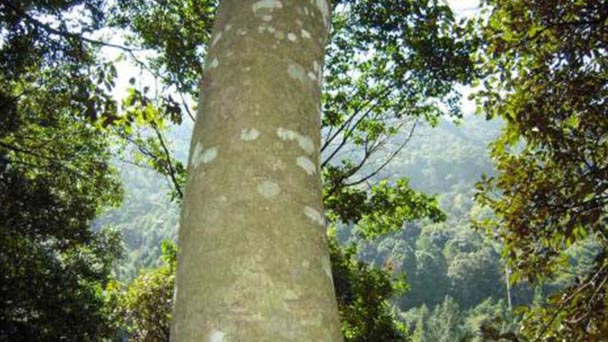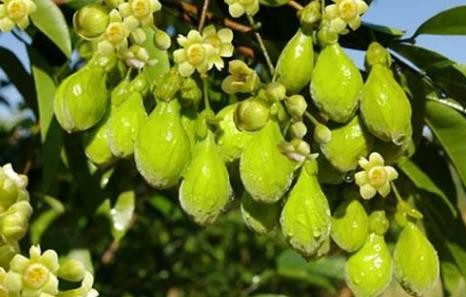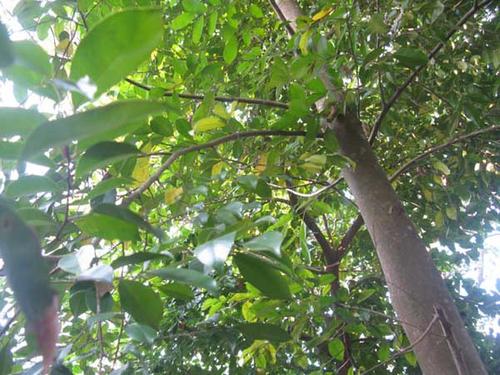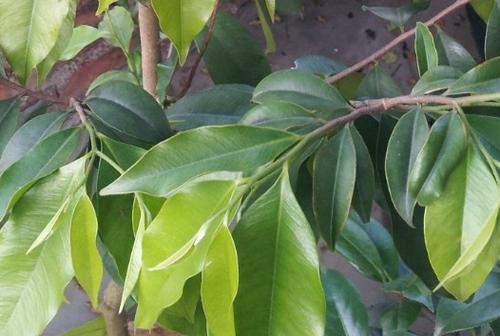How to propagate Aquilaria malaccensis
Written by Maggie
Dec 25 2020

Artificial cultivation is the most effective method to solve the wood shortage of Aquilaria malaccensis. In recent years, some new advances have been made in the study of propagation techniques for plants of the genus Aquilaria malaccensis, including seed propagation, cuttage propagation, grafting propagation.

1 Seed propagation of Aquilaria malaccensis
Aquilaria malaccensis has a large seed quantity, which can be seeded and propagated, among which soil aquilaria malaccensis has used seeds for seeding and propagation earlier. aquilaria malaccensis seeds have high oil content and are easy to deteriorate, and are not suitable for sun exposure and accumulation. Seeds should be sown within 5 days, otherwise the germination rate will be significantly reduced. However, after 30 days at room temperature, the germination rate decreases by 70%, and seeds stored at room temperature for more than 3 months will lose the ability to germinate completely. If sowing cannot be done in time, 1 part of seed and 3 parts of wet sand can be mixed and stored. Or the seed can be dehydrated and dried and then sealed for cryopreservation at 4 ℃, and the germination rate can be kept high. Seeds of Aquilaria malaccensis are kept at a temperature of 5 ~ 10 ℃, and their vitality can generally be maintained for 3 ~ 4 months.
The nutritive soil formula sown in Aquilaria malaccensis can adopt red heart soil with a small amount of river sand, calcium superphosphate and edible fungus waste. When the shade was 60%, the seed germination rate of Aquilaria malaccensis was the highest. Light matrix seedling is a new seedling method which appears in recent years and is conducive to the rapid growth of Aquilaria malaccensis seedlings. For example, in the basic raw materials of pine bran and peat soil, organic matter such as bagasse or forage residue of a certain proportion is mixed again. In addition, the experiments of specialists showed that 50% pine bark + 25% retting sawdust + 25% carbonized bark had a better effect on propagating Aquilaria malaccensis. Appropriate shade should also be given after the seedlings are unearthed, and the seedling mortality rate is the highest under natural light showed that seedlings treated with 50% shading of Chinan Aquilaria malaccensis(Aquilaria crassna) had better growth than those treated without shading.
2. Cuttage propagation of Aquilaria malaccensis
Aquilaria malaccensis can also be propagated from cuttings. Cuttings to take a semi - lignified twig, and it needs shade treatment. In general, in late spring and early autumn, the current year's growing branches are selected as cuttings, and 5 ~ 15 cm of strong growing branches are cut, with more than 3 segments per branch. In the selection of cutting branches in Aquilaria malaccensis, specialists showed that the survival rate of semi-lignified cutting in summer was 22%, while the survival rate of lignified branches in winter was 12%. Specialists found in the cuttage experiment of soil Aquilaria malaccensis that the cuttage using basal branch was more effective than the middle branch and shoot branch. After cutting temperature is generally maintained at 20 ~ 30 ℃, film can be used to wrap the container for insulation, at the same time to the cuttings for spray, maintain the relative humidity of the air in 75% ~ 85%.

Cutting substrate can choose nutrient soil or river sand, peat soil, vermiculite and other materials. Some specialists believed that vermiculite was the most suitable cutting substrate for Aquilaria malaccensis, and its rooting rate, average root number and average root length were 78.3%, 3.3 and 3.6cm, respectively. In addition, experiments showed that the 1:1 ratio of red soil and perlite was conducive to rooting of soil Aquilaria malaccensis, and the rooting rate could reach 90.3%. For the cutting propagation of Aquilaria malaccensis, the most critical link is the generation of advection roots of cutting branches. It is currently believed that auxin and vitamin B6 treatment with a certain concentration is conducive to the rooting of cutting. Experiments found that cutting the rooting rate of Aquilaria malaccensis treated with IAA 1 500 mg/L was the best, and the rooting rate could reach 43.08%. In addition, rooting cofactors such as warm water, sucrose and VB6 also contributed to the root generation of cuttings in soil Aquilaria malaccensis, and significantly increased rooting rate. In terms of nutrient supply, the application of a certain amount of water-soluble fertilizer promoted the growth, development and morphological establishment of roots of Aquilaria malaccensis(Aquilaria malaccensis) in Malaysia and Aquilaria malaccensis in soil. Adding chemical reagents of 100 ~ 150 g/L CuCO3 can inhibit the growth of primary roots, promote lateral root proliferation, and expand the absorption area of nutrients, which is conducive to the survival of seedlings after transplanting.
3. Grafting reproduction of Aquilaria malaccensis
For Aquilaria malaccensis, which is difficult to root, grafting is also an important approach for asexual reproduction. However, there are few studies on grafting technology of Aquilaria malaccensis in China. Some experts believed that grafting of Aquilaria malaccensis was generally appropriate in July and August, and the selected scion was generally an adult good tree of Aquilaria malaccensis with a diameter of 0.6 ~ 0.8cm. The graft rootstock was generally a seedlings of 2-year-old soil Aquilaria malaccensis, and the interface diameter of rootstock was 0.4 ~ 1.0cm. The experimental results of Aquilaria malaccensis conducted by specialists showed that the semi-lignified scion was cut in summer and survived for about 30 days, with a graft survival rate of 52%. The method was that the length of the long cutting surface was 2 ~ 2.5cm, but the length of the pulp core and the short cutting surface were 1 cm, and the pulp core was through.

Latest Updated
- Benefits of Bugleweed - 7 Science-backed Health Benefits
- Bugleweed Dangers & Side Effects - Is It Poisonous?
- How to Plant Evergreen Trees - What You Should Know
- When to Plant Evergreens - Grow Guide for Evergreen Trees
- 12 Wonderful Evergreen Shrubs for Your Garden
- 12 Popular Evergreen Plants with Pictures for Beginners
- When And How To Prune A Lilac Bush Like a Pro
- How to Grow & Care for Lilac Vine (Hardenbergia Violacea)
- Japanese Lilac Tree (Syringa Reticulata) Care & Propagation Guide
- Shumard Oak Pros and Cons - What to Know
Popular Articles
- Winter maintenance of Antirrhinum Majus
- How to Grow Terminalia Mantaly Tree
- How to Grow and Care for Crossostephium Chinense
- How to grow Antirrhinum Majus in spring
- Peristeria Elata (Dove Orchid) Profile: Info & Care Guide
- Underwatered Snake Plant (Sansevieria Trifasciata) - Signs And How To Fix
- How to Care for Brazilian Jasmine Plant (Mandevilla Sanderi)
- How to Grow & Care for Graptopetalum Purple Delight in Summer
- Rosa Chinensis (China Rose): Plant Growing & Care Tips
- How to Care for Baby Sun Rose (Aptenia Cordifolia)